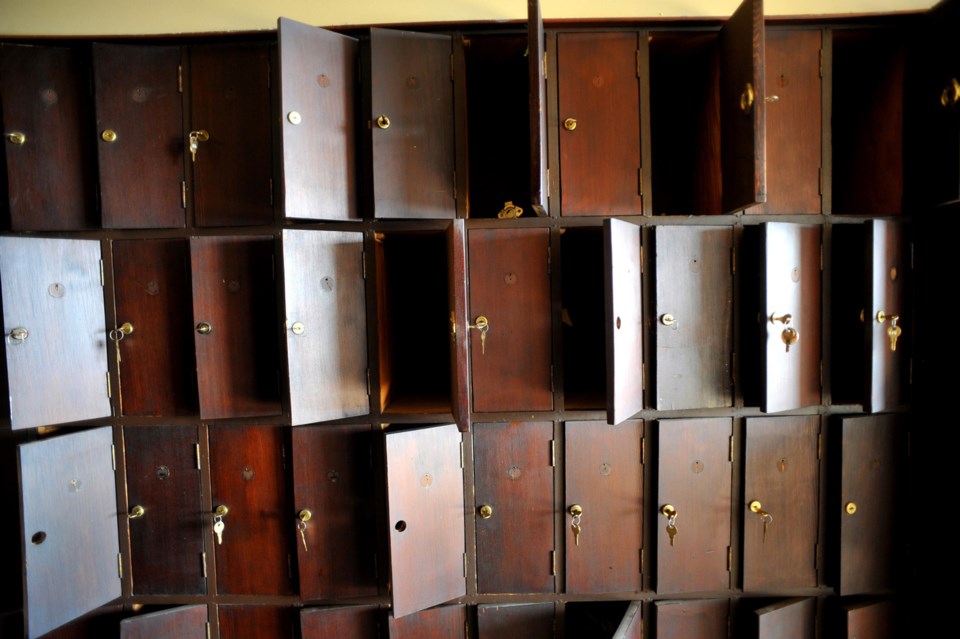Considering the number of gartered guests that have graced its grounds, it's ironic that the Westminster Club came up one knight short when it needed one the most.
Right up to the last moment, the club's brass were hoping a financial saviour would step forward and rescue it from a court-ordered sale of their penthouse premises in the Westminster Building on Columbia Street. But on a dreary December morning, the facilities were sold to the Community Living Society, and the remaining 10 members of the once-mighty Westminster Club were left dreaming of what might have been.
Over its century-plus history, many a white knight walked through the doors of the storied club. Since moving into the Westminster Building in 1912, the club's digs had hosted premiers, vice-regal representatives, a Soviet fishing minister, a duke, a field marshal, the knighted, the moneyed and the mysterious. Those rumoured to have wined and dined behind its closed doors include the likes of Sir Winston Churchill and Pierre Trudeau.
Less mysterious were the locals. The who's-who of New Westminster's political and business elite once called the club their home away from home. A glance of the list of former presidents reveals names like Copp, Legge, Ewen, Clute and Matheson.
First established in 1889, the Westminster Club was typical of its day. A kind of big-boy tree house with servants (who could not be tipped), where gentlemen stuffed into the starched collars of Edwardian convention could relax, have a drink and play billiards or some cards.
A picture of life behind the oak doors is painted in Dale and Archie Miller's Westminster Club. No dogs were allowed (ever) and no cards on Sunday (except for those games approved by the executive and at acceptable stakes). Bets were $1 a hand for draw poker, 25 cents for stud and one cent a point for bridge. Other steaks, as in the meal, cost $1.35 in 1958. They could be washed down with a shot of Seagram's whiskey for 30 cents.
Perhaps it's prophetic that the same year the club moved into their fancy new digs, an extraordinary meeting had to be held to deal with its indebtedness. The club's books have plenty of references to the problem of getting the members to pay their fees and bills. But that didn't stop the executive from buying essentials like Mayfield-pattern porcelain china and "the necessary types of wine glasses."
Upkeep was also a problem, but a gallon of calcimine (otherwise known as whitewash) was used to hide the "deplorable condition" of some of the rooms during the Great War.
And the knights? Premier Sir Richard McBride, then New Westminster's most famous scion, was a member until 1916, when he resigned to move to London and take up the newly-created post of Agent General for B.C. There is the tantalizing (but unproven) possibility that Churchill, in town for the 1929 Diamond Jubilee celebrations, indulged in a few brandies and cigars as a guest.
What is certain is that Field Marshall (and Viscount) Montgomery dined with the officers of the Royal Westminster Regiment at the club in 1961. Another knight (as in Knight Commander, Order of the Bath) has also been entertained in the person of Major-General Gerald Cavendish Grosvenor, 6th Duke of Westminster.
By the end of the Second World War, Canadian society had changed profoundly. The days where the Westminster Club could continue to be a sort of colonial location set for Downton Abbey were over. The process of change was slow: women were finally allowed to join as full members in 1991. The first female club president, Karen Baker-MacGrotty, was elected in 2002.
The rest, as they say, is modern history. Too much debt, not enough revenue. And for the premises in the Westminster Building, the era of being the place to be if you wanted to be anyone in New Westminster is over. The club's premises now belong to the Community Living Society and they're throwing the doors to the digs open wide.



